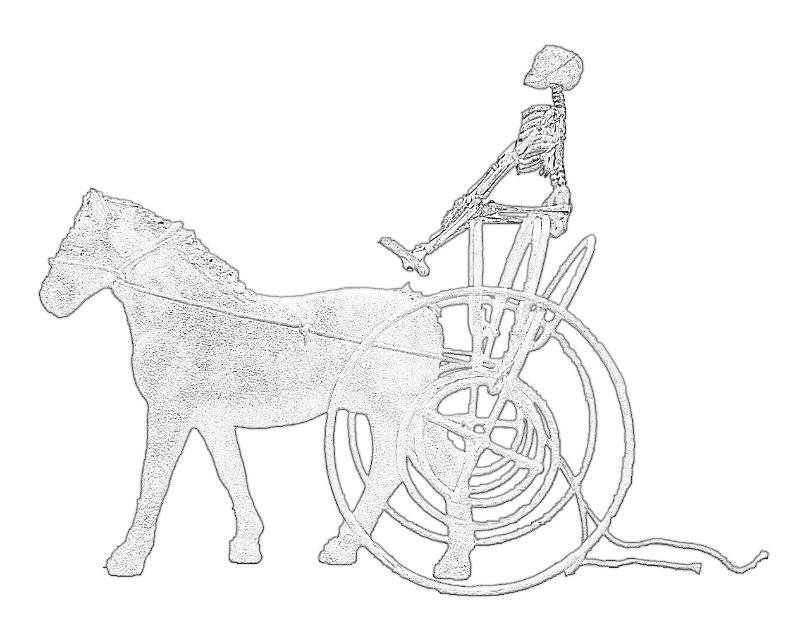
Giorgio Morandi (1890-1964) painted the silence. Stillness. More or less all his life.
He did this mostly indoors, in a humble room in Bologna, northern Italy.
He painted the silence and the light using objects like jars and small vases.
Over and over again, in ever-changing formations. With great care and attention.
I feel great admiration for this acquired mastery.
He managed to catch a pure timelessness, a point of stillness in objects, or rather;
he found this stillness through his constant attention. And created it.
Only a fraction of this contemplative concentration will have been my experience in making this Parade Macabre. I liked doing it, the simple tying of a knot, the cutting of a piece of string, and especially the composing of a dusty white matte.
I don't know how far I succeeded in the creation of a truly contemplative work but the silence of my own hands carried me away; to medieval dances of the dead, to skeletons hand in hand with their still living equals,
to places of endless emptiness while the chariot wheels dried before me on my table.
With great care I slid my own wooden skeleton together so that I could follow the hedgehog-boatman, the figurehead-wolf, and the rigged hippopotamus.
Giorgio Morandi (1890-1964) painted the silence. Stillness. More or less all his life.
He did this mostly indoors, in a humble room in Bologna, northern Italy.
He painted the silence and the light using objects like jars and small vases.
Over and over again, in ever-changing formations. With great care and attention.
I feel great admiration for this acquired mastery.
He managed to catch a pure timelessness, a point of stillness in objects, or rather;
he found this stillness through his constant attention. And created it.
Only a fraction of this contemplative concentration will have been my experience in making this Parade Macabre. I liked doing it, the simple tying of a knot, the cutting of a piece of string, and especially the composing of a dusty white matte.
I don't know how far I succeeded in the creation of a truly contemplative work but the silence of my own hands carried me away; to medieval dances of the dead, to skeletons hand in hand with their still living equals,
to places of endless emptiness while the chariot wheels dried before me on my table.
With great care I slid my own wooden skeleton together so that I could follow the hedgehog-boatman, the figurehead-wolf, and the rigged hippopotamus.
Giorgio Morandi (1890-1964) painted the silence. Stillness. More or less all his life.
He did this mostly indoors, in a humble room in Bologna, northern Italy.
Hij schilderde de stilte en het licht met behulp van kleine vazen, kannen, en kruiken. Keer op keer opnieuw, in steeds wisselende formaties. Met grote zorg-vuldigheid en aandacht.
I feel great admiration for this acquired mastery.
He managed to catch a pure timelessness, a point of stillness in objects, or rather;
he found this stillness through his constant attention. And created it.
Only a fraction of this contemplative concentration will have been my experience in making this Parade Macabre. I liked doing it, the simple tying of a knot, the cutting of a piece of string, and especially the composing of a dusty white matte.
Ik weet niet in hoeverre ik ‘geslaagd’ ben, maar de stilte van mijn handen voerde me mee. Naar Middeleeuwse dodendansen, naar skeletten hand in hand met hun nog levende mens. Naar oorden van eindeloze leegte terwijl voor me op tafel de wagen-wielen droogden.
Met grote aandacht schoof ik mijn eigen houten skelet in elkaar, zodat ik de schippersegel, de boegwolf, en het getuigde nijlpaard kon volgen.